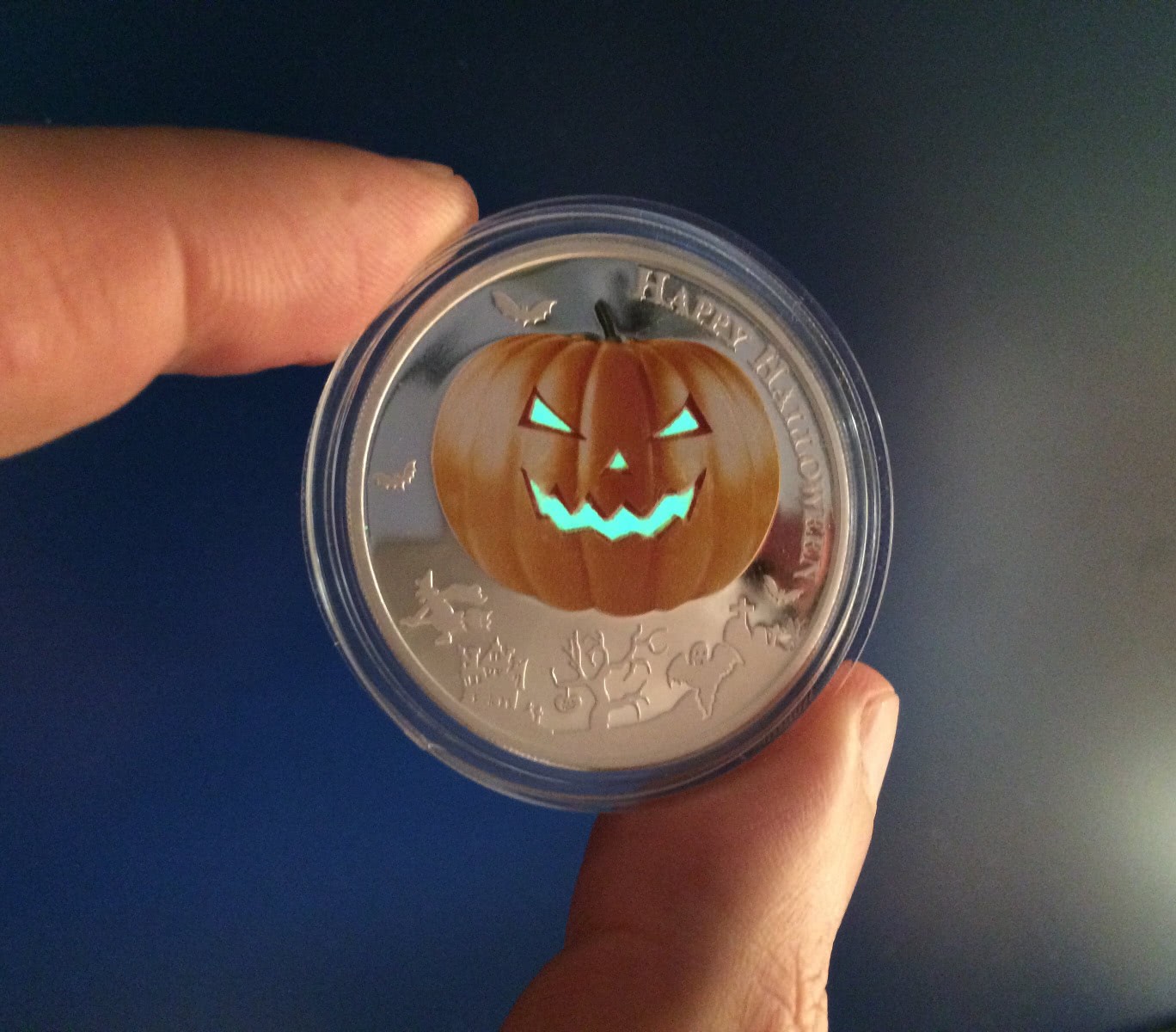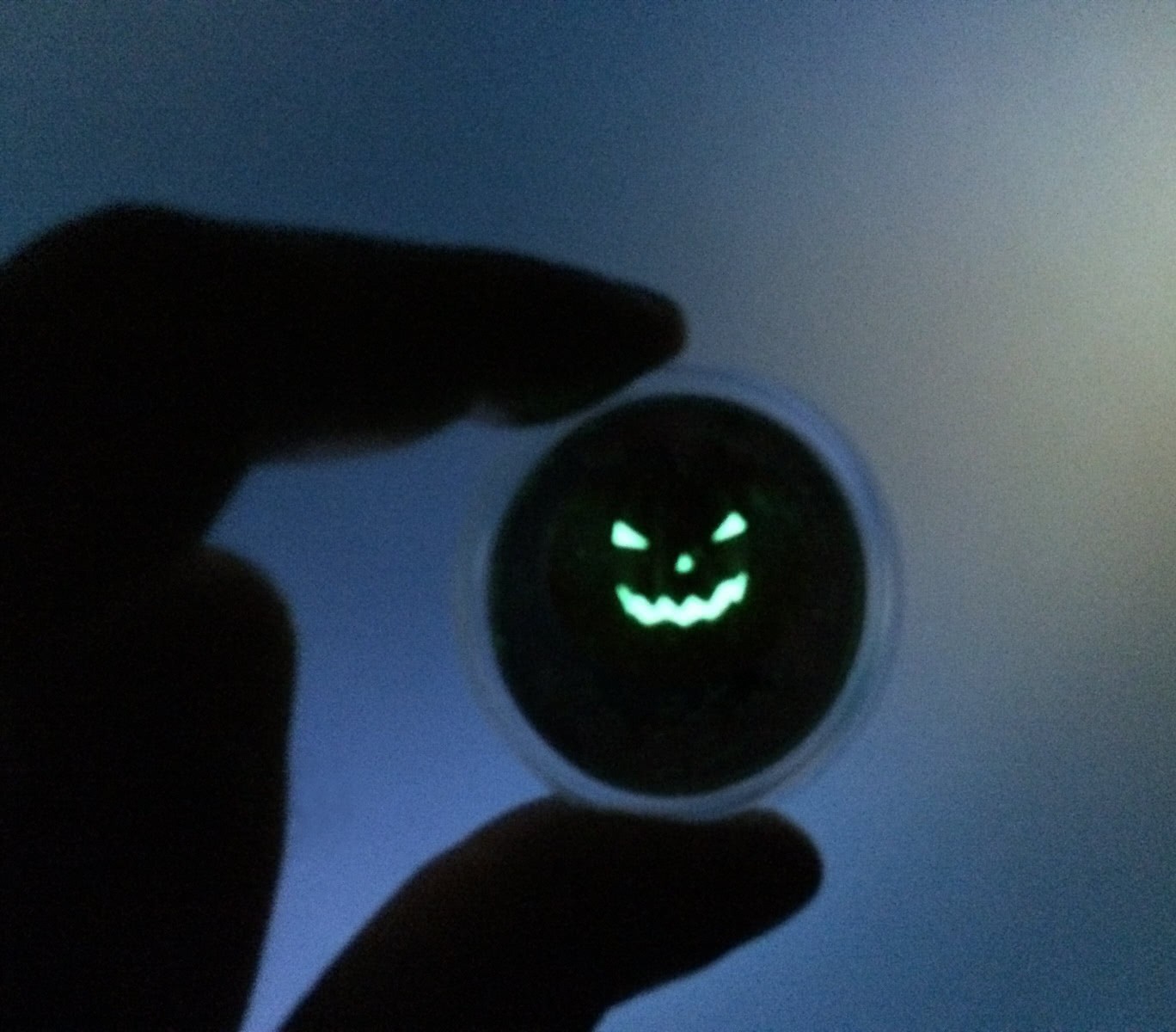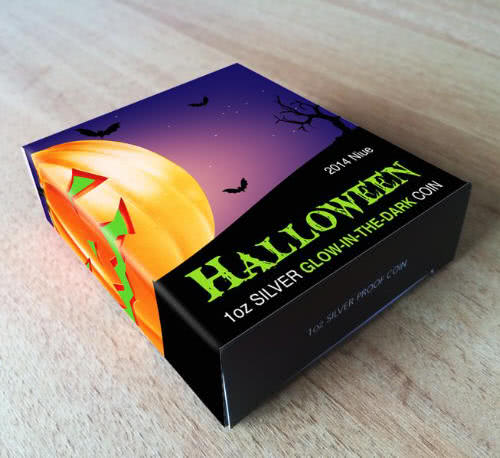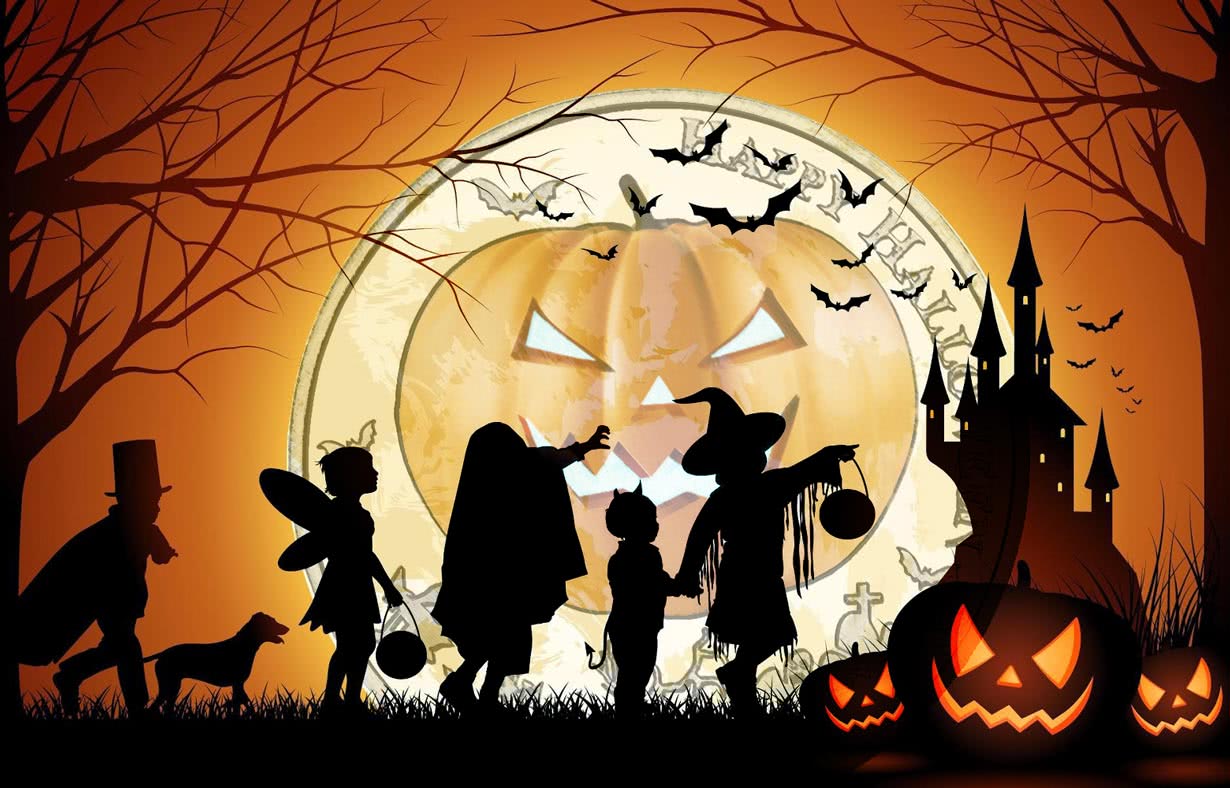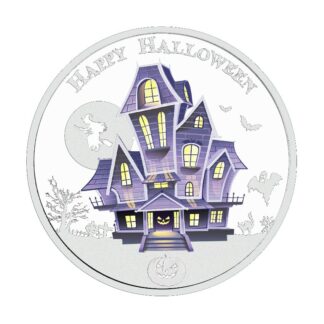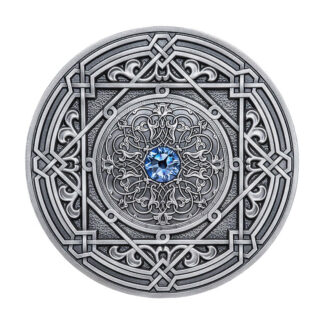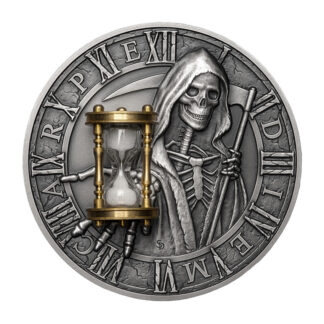Description
DESCRIPTION
On coin reverse there is a coloured image of the famous Jack-o-Lantern pumpkin, elements of Halloween tradition and the inscriptions: ‘Happy halloween’.
The coin obverse shows the nominal value, an image of the Queen Elizabeth II with inscription, ‘Elizabeth II’, the name of the issuer, ‘Niue Island’ and the year of issue 2014.
JACK-O’-LANTERN
A jack-o’-lantern is a carved pumpkin, or turnip, associated chiefly with the holiday of Halloween, and was named after the phenomenon of strange light flickering over peat bogs, called will-o’-the-wisp or jack-o’-lantern. In a jack-o’-lantern, the top is cut off to form a lid, and the inside flesh then scooped out; an image, usually a monstrous face, is carved out of the pumpkin’s rind to expose the hollow interior. To create the lantern effect, a light source is placed within before the lid is closed. This is traditionally a flame or electric candle, though pumpkin lights featuring various colors and flickering effects are also marketed specifically for this purpose. It is common to see jack-o’-lanterns on doorsteps and otherwise used as decorations during Halloween.
What is Halloween?
The word Halloween is a contraction of All Hallows’ Eve (Evening). Halloween’s Day is always on the 31st of October, and it is a day where ‘the veil’ between worlds (as in the world of the living versus the world of the dead) is supposed to be thinner than usual.
You’re supposed to be more apt to see ghosts (and the souls of the dearly departed) on this day, and some good folks actually spending the day – and most particularly the night – at haunted locations in an attempt to do so. Others want to avoid seeing ghosts, and that is actually part of the reason why people dress up in intimidating costumes – to ward off ghosts, demons and evil spirits.
In Spain, Latin America, and Mexico they celebrate Hallowmass, and the third day of that is the most important one – it’s called All Soul’s Day – a.k.a. Halloween, the 31st October.
But the traditions of dressing up in frightening or funny costumes, apple bobbing, having parades, dancing, having masquerades and rave parties, carving pumpkins into jack-o’-lanterns, lighting bonfires, playing pranks – as well as visiting haunted attractions, telling scary stories and watching funny or frightening films on this day existed (and exists!) in other cultures and countries around the world as well.
In some countries it is considered a harvest festival, and in Ireland, Cornwall, Brittany, Wales and the Scottish Highlands there’s a very old tradition called Samhain (“summer’s end”), which has been considered of great importance for ages. This, like Halloween, includes a thinning of the veil between worlds, which means that spirits and fairies and such can visit our world.
The kids on Halloween play games (like apple bobbing) and, more importantly, there’s “guising” or trick-or-treating where they dress up in costumes and go from door to door and collect sweets and candy. The “Trick or treat?” statement the kids make is actually a (mostly empty) threat to do pranks (play tricks) if they don’t get sweets (treats). This tradition goes all the way back to Shakespeare’s time, because it is mentioned in his play ‘The Two Gentlemen of Verona’ from 1593.





